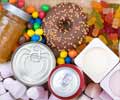Microwave ovens are here to stay despite anxiety about its safety. Like cell phones and so many other technology gadgets they have changed our lifestyle.
Gone are the days when a housewife in India proudly talked about a refrigerator or a mixer as a prized possession. The latest fad is the microwave oven. "It is so simple. I finished my cooking in 20 minutes," one could hear housewives recalling breathlessly, pointing to the latest entry into their kitchen. The prices of microwave ovens like any other technology gadget keeps plummeting and as a result the large Indian middle class, is able to afford this luxury, making it a ‘housewives valuable possession.’
Microwave Ovens’ Working PrinciplesMicrowaves are radio-waves in the region of roughly 2,500 megahertz (2.5 gigahertz). In this range the microwaves are absorbed by water, fats and sugar and not by plastics, glass or ceramics. The metals tend to reflect the microwaves and hence cause sparking in the oven and are dangerous to use when heating or cooking food.
Once absorbed these radiowaves accelerate the oscillations of atomic motion and generate heat. The food cooks from inside rather than from outside as in conventional electric or gas ovens, hence you do not get a brown crust on top of food cooked in a microwave.
Safety Views on Microwave from Doctors
The exciting science apart, there are those who oppose microwave ovens on the ground that it overcooks food and severely damages the molecules in the food.
But doctors don’t subscribe to the views of anti-microwave oven campaigners. "I don’t think there is any harm in using a microwave oven. In western countries, they have been using it for decades. It works in the way our idly cooker works. In idly cooker, the water vapor is acting as heating agent. In the oven, it is electromagnetic waves. It’s fast and easy," says general physician Dr. R.M. Annamalai of Chennai, south India. (Idlis are rice pancakes.)
Noted gastroenterologist Dr Chandramohan also said that he was yet to come across any proof that would support the arguments against microwave ovens.
Another general physician Dr Sakthirajan also expressed a similar view. "The advantage of these ovens is that we can avoid using oil for cooking. It is some thing very positive about the micro ovens. Moreover nutrients are preserved in microwave cooking," he said.
Microwave Oven - Not So Safe
The controversy about the safety of using microwaves ovens for cooking has raged ever since it was launched. Unquestionably, to market this product clever marketing and advertising ploys have been used. The hype thus created overshadows the fears of the ‘unknown factors’ that can damage our health. The answers are not easy to find as the variables are so many in any experiment that involves universal use of a technology gadget. The questions that keep haunting us about the microwave ovens are as follows:
1. Can the radiation that heats the food harm our health? – For example, cause increased incidence of cancers in the world?
2. Thus though experts don’t see any harm in cooking with microwave ovens, cooks and homemakers seem to have their fears.
"It is not at all healthy. When we cook with fire, no radiation is involved. In the ovens, it is radiation that warms the food. We know that this radiation will cause harm to the human body. In star hotels, even pizzas are prepared only in the traditional way," says celebrity chef Jacob of Chennai.
Mrs. Bhavani Andrews, a practising nutritionist from Chennai, feels that while kitchen gadgets reduce labour, their nutritional benefits and their necessity is questionable. “Using a hand-sieve to remove stones, insects and larger grains is any day safer than using a food processor or an electric sieve for the same. Cooking meat in a microwave oven should not be attempted unless one is comfortable using it. Only after more than 10 failed attempts could I fry chicken with the oven. I was always undercooking or overcooking the meat. One has to get used to the mechanism, cut the meat into equal-chunks and distribute them evenly to get it right.”
US FDA Guidelines For safe Cooking Using Microwaves
The US FDA’s Centre for Food Safety and Applied Nutrition warns that microwave ovens can cook unevenly and leave "cold spots," where harmful bacteria can survive.
It suggests some tips to prevent food-borne illness -
• Arrange food items evenly in a covered dish and add some liquid if needed. Cover the dish with a lid or plastic wrap; loosen or vent the lid or wrap to let steam escape. The moist heat that is created will help destroy harmful bacteria and ensure uniform cooking. Cooking bags also provide safe, even cooking.
• Do not cook large cuts of meat on high power (100%). Large cuts of meat should be cooked on medium power (50%) for longer periods. This allows heat to reach the center without overcooking outer areas.
• Stir or rotate food midway through the microwaving time to eliminate cold spots where harmful bacteria can survive, and for more even cooking.
• When partially cooking food in the microwave oven to finish cooking on the grill or in a conventional oven, it is important to transfer the microwaved food to the other heat source immediately. Never partially cook food and store it for later use.
• Use a food thermometer or the oven’s temperature probe to verify the food has reached a safe temperature. Place the thermometer in the thickest area of the meat or poultry—not near fat or bone—and in the innermost part of the thigh of whole poultry. Cooking times may vary because ovens vary in power and efficiency. Check in several places to be sure red meat is cooked at 160 °F, whole poultry at 180 °F, and egg casseroles at 160 °F. Fish should flake with a fork. Always allow standing time, which completes the cooking, before checking the internal temperature with a food thermometer.
• Cooking whole, stuffed poultry in a microwave oven is not recommended. The stuffing might not reach the temperature needed to destroy harmful bacteria.
(courtesy: http://www.fsis.usda.gov/FactSheets/Cooking_Safely_in_the_Microwave/ index.asp)
For energy efficiency with microwave ovens, Lindsay Edmonds, a culinary expert, advises against opening the oven door to take a peek at what’s cooking inside. “Instead, turn on the oven light and check the cooking status through the oven window. Opening the oven door lowers the temperature inside - by as much as 25 degrees - which increases cooking time and wastes energy.
“As long as your oven is on, cook several items at the same time. Just make sure you leave enough room for the heat to circulate around each item. In an electric microwave oven, you can turn the heat off several minutes before your food is fully cooked. As long as the oven door remains closed, enough heat will be stored inside to finish cooking your meal.”
Another thing that makes oven users wary of it is a possible radiation leakage. Old or faulty door seals are the most common causes of microwave radiation leakage. But manufacturers say that with the latest technological advances in door seal design and proper maintenance, leakage has been greatly minimized or eliminated.
Top Ten Safety Tips When Using the Microwave Oven -
• Eggs will explode inside the microwave so never cook them in a microwave oven.
• Never keep anything metallic in nature inside the microwave. You would end up spoiling your microwave as metallic objects cause sparking effect within a microwave oven.
• Do not cook eggs as they can explode within the microwave.
• Never ever try to put electronic items such as mobile phones inside a microwave to remove moisture. Microwave can cause irreversible damage to silicon chips.
• Microwave oven should not be operated when empty.
• Patients who have a pacemaker implant should avoid being in the vicinity of the microwave when it is cooking food.
• For repair of the oven always seek professional help.
• Check the door seal, inside surfaces of door and oven cavity are clean after each use.
So if you have recently purchased a microwave oven go ahead and enjoy the cooking as long as you follow our advice on safety measure. So be careful and Happy eating!
Source-Medindia
GPL/K











